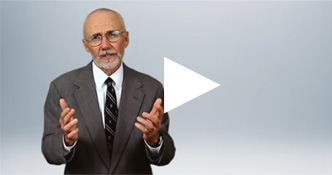The Role of the Case Statement in Fundraising
by Susan Whitmore
An effective case statement sets forth the reasons why an organization is deserving of philanthropic support. A case statement 1) articulates the societal cause the organization champions, and 2) lists the reasons why one should make a contribution in support of the cause.
Internal and External Case
There are two types of case statements: internal and external. The internal case is used inside the organization by the governing board, program officers, and staff. The external case has the public and potential donor as its audience.
The Internal Case
The internal case is used inside the organization and is not for a public audience. The process of writing the case is as important as the final product. Content rather than appearance is important. The internal case forces staff and leadership to articulate in writing the fundamental reasons underlying the appeal for funds. How is the campaign going to benefit the community? How is it going to “save or change lives”? What new programs, facilities or endowment will come about to further the organization’s mission?
It may also contain other information critical to the organization’s work — the mission, goals and objectives, programs and services, staffing, governing board, facilities, and how funds are allocated.
Material for grant proposals and other campaign materials often are drawn from this document.
The External Case
The external case has the public and potential donor as its audience. It tells the engaging story of the nonprofit organization and the community it serves and directly states the case for need. External cases may be presented as brochures, glossy portfolios, speeches, or letters.
An effective external case statement covers two territories: 1) the case for need, and 2) the request for support.
The Case for Need
- Identifies the societal needs contained in the organization’s mission
- Contains personal testimony both inside and outside the organization
- Highlights the expanded services or facilities that will be possible from the fund raising appeal
- Shows who will benefit from philanthropic support
- Delineates the organization’s strengths, staff and oversight
The Request for Support
- Delineates resources required to successfully run programs
- Explains why the potential donor should make a contribution
- Tells how the potential donor can make a donation
- Identifies the donor’s reward: partnership in fulfillment of mission
Given a pressing campaign need or limited resources, some nonprofit organizations skip internal case development and move directly to the preparation of public, external case statement. In this situation the organization’s current strategic plan may be used as the philosophical guide for the more creative and energetic, public piece.
Who Prepares the Case Statement?
Case statements are generally prepared by fund raising staff or those responsible for the organization’s fund raising. Without fund raising staff, the case might be prepared by the organization’s director working with a committee of the governing board.
Also, fund raising consultants are often partnered with fund raising staff in preparation of the case. In this situation, there is efficacy in combining staff committed to the organization’s mission with a consultant versed in the outside community’s disposition and needs.
Drafts of the case are usually reviewed and modified by the governing board before they are accepted or rejected by the organization.
Bill Moran, The Moran Company, specializes in nonprofit executive searches
for executive directors, fundraising staff and other top nonprofit leadership.
www.morancompany.com
© 2008 The Moran Company
“We find great nonprofit executives”
Posted in Fundraising Articles
Subscribe
Join more than 10,000 nonprofit professionals, community leaders and board members who receive e-mail updates from The Moran Company.






